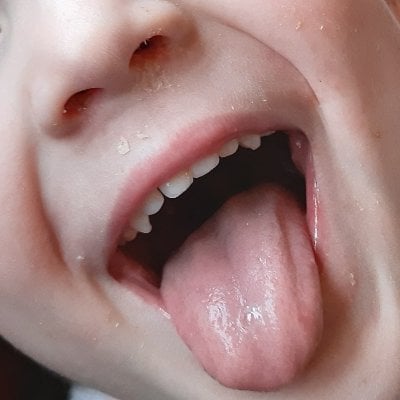For some of these, I estimate the number of items the base and then multiply by the height. Is there a better strategy, especially for items that don’t fit into distinct layers?
Original post crossposted from !dailygames@lemmy.zip: https://piefed.social/post/1205620
Guess here: 🔗 https://estimate-me.aukspot.com/archive/2025-08-29
If you’d like to discuss your guesses, please use spoiler tags!
- Set lower bound by counting how many are visible in the photo
- Grow disinterested
- Guess some number above the result from step 1
Start with the bottom, count how many are visible on the lowest layer. This gives you half the circumference of the lower end.
Repeat for the highest part of the cup that is still cup, not above the line.
Multiply each of these by 2 and you have the circumferences of each end of the cut cone.
Rearrange the circle area formula to get the radius from circumference and you have the radius of each end of the cone.
Now use the cut cone formula to calculate the volume in terms of hazelnuts.
Next, take the radius of the top circle and estimate how far above that the highest nut is. Use whatever formula seems more appropriate, in this case maybe just a right angle triangle formula with a full rotation, to estimate the volume of the top.
Sum that together with the conic volume and you have a good estimate.
My estimate, at least 3 hazelnuts.
Good luck
licks screen
210
You don’t have to actually lick it, you can just imagine
Roughly a truncated cone with diameters ~7 nuts and ~9 nuts, and the cup is ~12 nuts high (loose guesses, it is hard to tell due perspective and nuts of different sizes). Throw in an extra layer to account for the heap at the top (which is a dome taller than 1 hazelnut, but treating it as a shorter but full layer should give some error cancellation) to give a height of 13. The volume of a truncated cone of those dimensions is ~657 cubic hazelnut diameters. Random sphere packing is 64% space-efficient (though wall effects should decrease this number) giving a total of 420 nuts (nice).
Multiple edits for clarity and typos.
Answer
This ends up being about 5% lower than the true answer. I’m surprised it’s that close. This is in the opposite direction from what I expected given wall effects (which would decrease the real number relative to my estimate). Perturbing one of the base diameters by 1 nut causes a swing of ~50, so measurement error is quite important.
funily enough I picked random numbers then just chose 420 as a funny number and got the same answer as you

Find a cup that is similarly shaped and sized, fill it with hazelnuts and then count it manually
Too lazy, measure mass of 4 hazelnuts to get an average, then weigh them all.
I did
V=pi×r²×h
and estimated:
r=4 (from some at the top left)
h=12
This gave 603. The link said too high, so realized I’d neglected packing factor. Google said that spheres typically pack at 64% efficiency, so I guessed 386. Too low.
Is there a name for this equation ands can you explain the pix part of the equation?
Its not “pix” its “pi * r² * h”. It’s a basic equation for the volume (V) of a cylinder.
Gotcha, thanks.
It’s the volume of a cylinder, pi times height times radius squared
Oh. Thanks. :)
These aren’t spheres, though, so the packing efficiency could be better, like 72% or better. These look better packed than those vases filled with glass marbles. So it could even be in the 80s.
Yeah I went 80% next which was too high. 72% is very close to the answer in the link.
Context:
I love it 😄
Did you extract those clips for this post, and do you have a recommended method for doing that? I sometimes find clips on getyarn, but the site barely loads half the time
Just looked up “Gibby fat cakes” on YouTube.
All of them are in the cup.
1, all is not a numeric value 2, not all of them are in the cup. Some of them are resting on top of others that are in the cup, but they themselves are outside of the cup’s boundaries.
Imagej
In arbitrary units, I need in pixels estimations for:
Height of the vase H
Top diameter of the vase Dt
Bottom diameter of the vase Db
Mean diameter of a hazelnut Dh (measuring a few of them)
Packaging factor F… something arround .6? I’m sure there is a better way of estimating it. Like counting air and hazelnut areas on the image but I’m not sure how to correlate 2D to 3D in this case.
The volume of the vase is Vv (H,Dt,Db)
The volume of a single hazelnut Vh (Dh)
N = Vv F / Vh
My method was that I waited for @m0darn@lemmy.ca to do the work and used it as a baseline. I got 8 away.
Someone say a God Damn number. _
480
Thank you. I feel better about this whole thing now.
Was I right?
Off by 38, not bad, I got similar
x
27???
I would look at them and pull a number out of my ass.
For me, it would be more about figuring out the rough volume. So, like, you look at a hazelnut, it appears to be about a half-inch spherical value. There seem to be about 6 wide across the bottom, so you could assume that the bottom is somewhere around three inches wide. The top is probably closer to about 5 inches wide. And the height is going to be something like 6 inches.
This is also using rough guesstimation from my own personal knowledge of cups.
So with that information I would use what I remember of the cylinder formula, which is pi times diameter times height I think.
And average the two diameters for a four, so you would go four times six times pi is about 75 cubic inches of volume. Each hazelnut uses about 3/4 of an inch of volume so I would guess there are about 100 hazelnuts in the cup.
That being said, the question is not, what is the correct way to guess it, just how would I do it, and this is how I would do it.
I think that this is more or less the approach I would take, but you shouldn’t worry about the actual diameter of anything. It’s not important, after all - if everything was scaled up twice as big, the answer would be the same. Just call the diameter of the cup a nice round number and then see how the hazelnuts compare to it. In this case I think there’s about five hazelnut widths to the glass, so I’m gonna call the glass diameter 50, the nuts 10, and the glass height 80.
You’ll need to change your formulae, though.
pi*dis the circumference of a circle, but we need the area here, sopi*r*r(and then multiply by height for volume). That gives me 157,050 whateverunits cubed for the volume of the cup. For a sphere it’s(4/3)*pi*r*r*r, so 524 for the hazelnuts. Now, I know that spheres don’t pack perfectly into a volume, but I don’t remember the factor even for optimal packing, so I’m just gonna take a wild guess and say that 70% of the internal volume of the cup is actually occupied by hazelnuts. That gives me… 209 hazelnuts in the cup. Which seems worse than your answer on a gut level, but I can count 86 visible ones so it’s maybe actually not badChecking my results
Hah, I was way off too
And after actually putting my quotes into it, I was horribly wrong, but still, that’s how I would have done it.
Vibes. I look at it and try to guess and submit a number within 5 or 10 seconds. It may not be as accurate but I feel like I get more benefit training my ability to estimate at a glance than I do training my ability to do math and spatial reasoning assisted by math. Im already really good at math and math assisted spatial reasoning
Weigh 10 hazelnuts, weigh all hazelnuts, do basic math.






